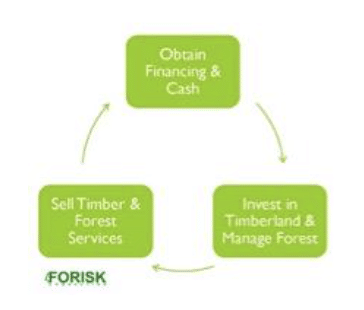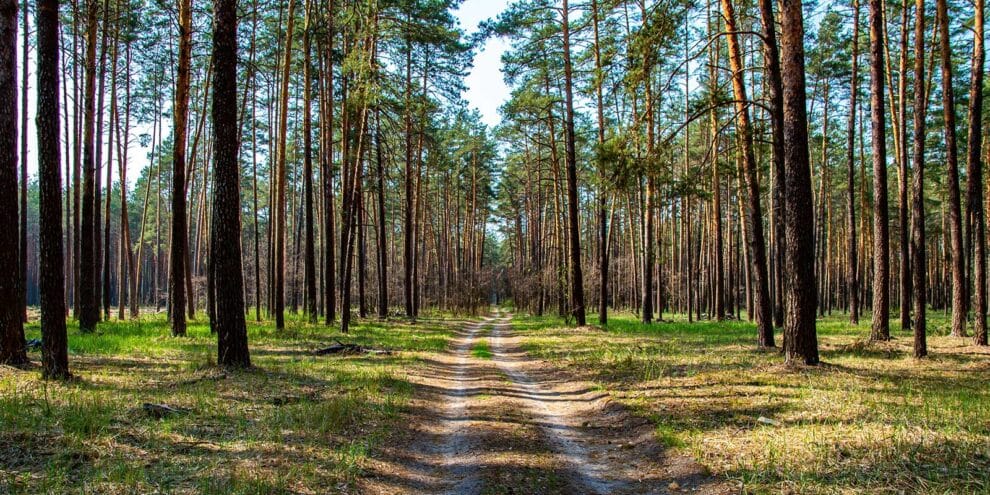The business of forestry does not operate in a vacuum. Investors compare timberlands to alternative assets, funds, and strategies. Capital flows around the world searching for the best returns relative to the associated risk. For these investors, risk management does not exist for its own benefit, but rather supports their efforts to protect values and optimize returns.
When investors acquire timberlands, they do so with strategies and harvest schedules that seek to maximize the present value and returns of the property. Anything that destroys assets, slows growth, or defers cash flows tends to diminish returns. Anything that increases present value faster than the investor’s opportunity cost, often expressed in the discount rate, enhances value.
Circular Flow of Funds

Managing the risk of forestry and timberland investments fits with the “circular flow of funds” approach to financial management, which focuses on two fiduciary objectives. One, raising and supplying the funds required for timber-related investments on favorable terms. Two, using these funds effectively and efficiently to maximize returns. In short, raise money at low rates and invest it in trees at higher rates. Simple, right?
In practice, achieving these objectives depends on regular, consistent flows of cash to non-cash assets (forests and wood) back to cash. The cycle continues, assuming no disruptions in forest operations, local timber markets, acquisitions and divestitures, or administrative activities.
Pricing to Perfection
When acquiring timberland, a key risk is overpaying, and this manifests in different forms. One is paying a premium price for an average asset or for an asset in a below average wood basket. Another way to overpay is to apply a valuation assuming perfectly optimal operational and biological performance of the forest and supply chain. How often do forest growth, harvesting activities, weather patterns, price forecasts, personnel decisions, and the state of the economy mirror our expectations from a decade ago, much less last year?
When timberlands are “priced to perfection”, the circle is bigger and harder to grow, harder to accelerate, and harder to de-risk. Inertia and exposure increase, and we worry about, on the margin, liabilities that could erode the size of the circle or slow it down.
The price of an asset can vary from its fundamental value over time because of uncertainty associated with future cash flows. As asset prices rise, the cash yield – whether bond coupons, stock dividends, real estate rent, or timber harvests – falls as a percentage of net asset value. Uncertainty increases interest in hard assets such as gold, land, and timber. And with land and timber, the localized nature of the asset provides distinct investment opportunities. However, over subscription to the asset class can lead to the evaporation of localized differences, as hungry investors ‘overpay’, providing opportunities to knowledgeable sellers. And then the reverse opportunity exists when markets correct.
This content may not be used or reproduced in any manner whatsoever, in part or in whole, without written permission of LANDTHINK. Use of this content without permission is a violation of federal copyright law. The articles, posts, comments, opinions and information provided by LANDTHINK are for informational and research purposes only and DOES NOT substitute or coincide with the advice of an attorney, accountant, real estate broker or any other licensed real estate professional. LANDTHINK strongly advises visitors and readers to seek their own professional guidance and advice related to buying, investing in or selling real estate.










Add Comment